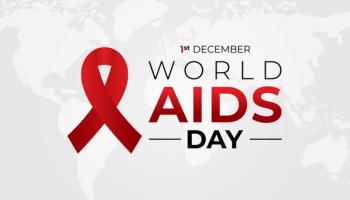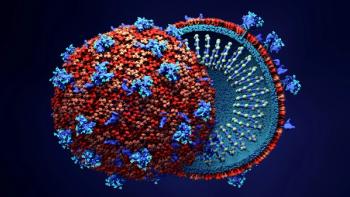
Phase 1 Results for a Longer-Lasting Monoclonal Antibody Against HIV-1 Are Positive, Researchers Report
The results feed into an effort to identify to monoclonal antibody combinations that would prevent and possibly treat HIV infections.
The results feed into an effort to identify monoclonal antibody combinations that would prevent and possibly treat HIV infections.
Without a vaccine, many of the hopes for preventing HIV infection are pinned to broadening use of preexposure prophylaxis (PrEP) that uses antiviral agents. The FDA is currently reviewing an application for lenacapavir, a version of PrEP that would require an injection just twice a year. An approval decision is expected on June 19.
But researchers are exploring other ways to prevent HIV. Chief among them are monoclonal antibodies that are designed to attach to the outer layer — the envelope — of the HIV virus to keep it from infecting cells. Researchers are testing strategies that would involve giving people several monoclonal antibodies that would attach to multiple sites on the envelope. Results of a
One of strongest candidates to be included in these monoclonal antibody cocktails is PGDM1400, that targets HIV envelope V2 apex, an important but relatively rare target of the flight of HIV monoclonal antibodies that researchers are investigating Tests have shown that PGDM1400 is active against a range of HIV subtypes and might be particularly effective against the HIV-1 subtype C, the most common strain and the one responsible for most of the infections in sub-Saharan Africa. One major drawback of PGDM1400, though, is its relatively short half-life in the bloodstream. As a result, researchers have modified it with lysine-serine amino acid substitution in the Fc region with an eye toward making it last longer. They called the modified version PGDM1400LS.
Positive results for modified version
In the June 2025 issue of The Lancet HIV, a team of researchers reported the
The trial shows that the modified monoclonal antibody is “safe and well tolerated with favorable pharmacokinetics and HIV-1 neutralization breadth, including against clade C viruses,” the researchers wrote in The Lancet HIV. The co-first authors of the study are
Seaton, Paez and Yu and their colleagues grouped the 15 people they enrolled in the phase 1 trial into five three-person groups. Three groups, or a total of nine study participants received PGDM1400LS intravenously and the other two, or six study participants, had subcutaneous injections. They tested intravenous doses of 5 milligrams (mg), 20 mg and 40 mg per kilogram of bodyweight and 20 mg and 40 mg doses per kilogram of bodyweight delivered intravenously.
Local side effects were more common among the six people who received subcutaneous injections, Seaton and her colleagues reported. The study’s safety committee reviewed the case of the patient who had erythema and edema and decided, because the reaction was local, to go ahead with subcutaneous injections with the five other patients in the subcutaneous injection groups. They all tolerated the injections, according to Seaton and her colleagues.
Tests of the neutralization effects of the monoclonal antibody tracked with the dose: the higher the dose, the greater the neutralization. Not surprisingly, measures of the antibody and its neutralization were higher right after infusion and peaked later after subcutaneous injection.
Seaton and her colleagues described the bioavailability of PGDM1400LS after infusion as favorable but “modest” after subcutaneous administration.
“Although subcutaneous administration might be advantageous due to relative ease of delivery and potentially reduced product costs with sufficiently high bioavailability, use of subcutaneous delivery methods in adults for current monoclonal antibodies would necessitate additional development in antibody delivery technologies before broader implementation to increase antibody availability and coverage,” wrote Seaton and her colleagues.
These results are just part A of this trial, called HVTN 140/HPTN 130. Part B, which was designed to enroll 80 participants, will assess an antibody combination that will include PGDM1400LS and two antibodies, PGT121.414.LS and VRC07-523LS. There are a number of studies underway testing various monoclonal antibodies with the goal of identifying the best combinations in a large trial.
Newsletter
Get the latest industry news, event updates, and more from Managed healthcare Executive.





















































